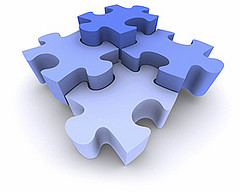Understanding the customer lifecycle
Does your organization focus on product or customer lifecycles? Do you know if your customer touch points are supporting your business goals and strategies? Are you converting prospects into loyal customers who advocate on your behalf?
Every organization knows and understands how to manage the life cycles of their products or services. Leading edge organizations create a sustainable competitive advantage by going beyond the basic management of product lifecycle to strategically manage customer lifecycles.
Keeping things simple, the customer life cycles describes the stages that a customer goes through in the process of purchasing a product or service and the relationship that is created and sometimes maintained with the vendor. It also establishes the value of a given customer across their lifecycle.
Components of the customer lifecycle
Six distinct components make up this management process: reach, acquisition, conversion, retention, loyalty and advocacy. Theses steps are aimed at getting a potential customer’s attention, clearly communicating what you have to offer, positively influencing their decision to buy and then keeping them as a loyal customer whose satisfaction with the product or service positively influences the buying decisions of other customers.
The major benefit is that an organization can establish and maintain efficient business processes that help the customer consider, purchase, use and promote their products. The holistic view of the customer provides marketers with valuable information that can be leveraged to improve product development, the creation of service bundles and the implementation of an optimal marketing strategy.
Customer relationship management & customer lifecycle working together
Customer Relationship Management (CRM) systems provide critical data about customers, such as, profiles or “snapshots” of customer characteristics or behaviour at a single place in time. Customer behaviour evolves over time and tracking these changes are clues to the future. Customer lifecycle management enhances CRM data so that marketing and service strategies are better aligned to customer changes. You can leverage your knowledge about customers to make each point of interaction a satisfying and profitable experience for all.
An integral part of a customer relationship management system (CRM), customer life cycle process helps to manage all touch points where a potential or actual customer comes into contact and interacts with the organization.
Customer lifecycle stages
From a prospect, to a loyal customer advocating on your behalf you have many opportunities to influence positively the customer thought process.
• The recognition that certain needs can be met through the purchase or acquisition of a product or service
• The identification of organizations that offer the product or service for purchase
• The evaluation of the various organization offers to determine the one that best satisfies the identified need
• The selection of the organization and the initial contact
• The completion of the purchase
• Using the product or service
• Considering other or additional products or services and repeating the cycle
• Talking about the product and service to influence the purchasing decisions of others
As the customer moves through these stages, your organization has increased opportunities to influence customer satisfaction – either positively or negatively. Inaccurate or untimely fulfillment of the customer needs and poor service can result in a decision by the customer not to purchase additional products or services, and to influence others to do the same. Preventing this requires good customer lifecycle management.
OneDesk’s tools helps you manage the customer lifecycle
There are many ways to ensure your customer experience is optimal. Discussing product or service related issues with customers can quickly identify ‘pain points’ and issues with your product development or operations. Creating process maps can help identify inefficiencies in the number and duration of contact points.
OneDesk equips you with the right tools that help you ensure successful execution of CRM across the many stages of the customer lifecycle and ensure customer satisfaction at all stages of product and service development.
Customer Engagement: OneDesk helps manage your efforts to attract a prospect’s attention, create awareness about your company and engage the prospect in a dialogue designed to move efficiently through the customer life cycle.
Ideas Management:OneDesk’s tools allows you to capture customer ideas for innovation and suggestions for improvement. By effectively managing their ideas, you maintain a prospect’s attention and build interest in your product so that they become customers and continue to share their ideas.
Customer Feedback Management: Capturing, managing and incorporating customer feedback into the product development process is made easy with this set of tools. Using you can create a customer portal where your customers can share their feedback and vote on product or service ideas. In this way, critical information from your customers is directly applied to the development of optimal products and services.
Let OneDesk’s tools help you manage your customer touch points so that all customer interactions build loyalty, retention, profitability and maximize ROI.
